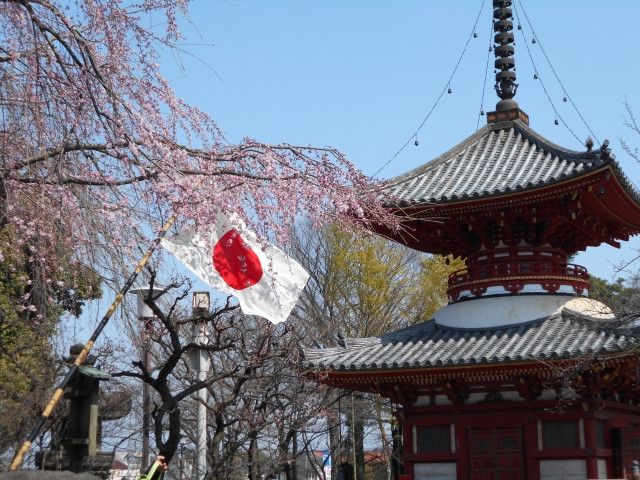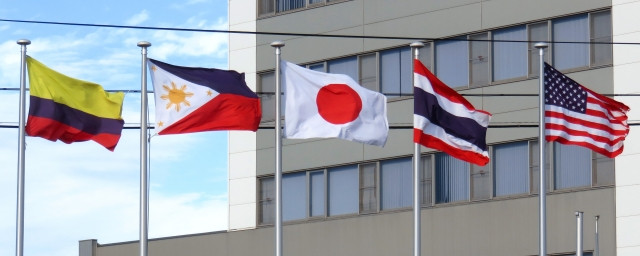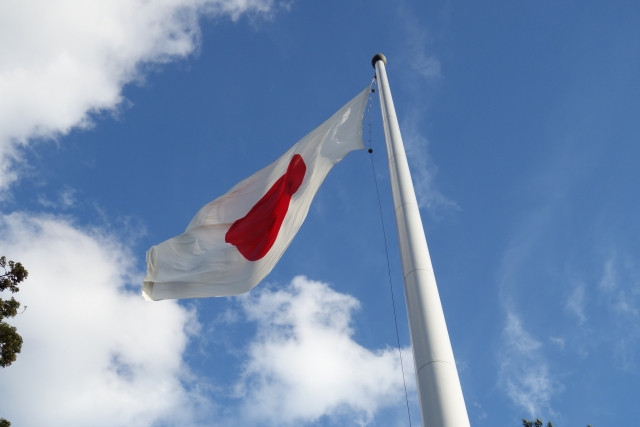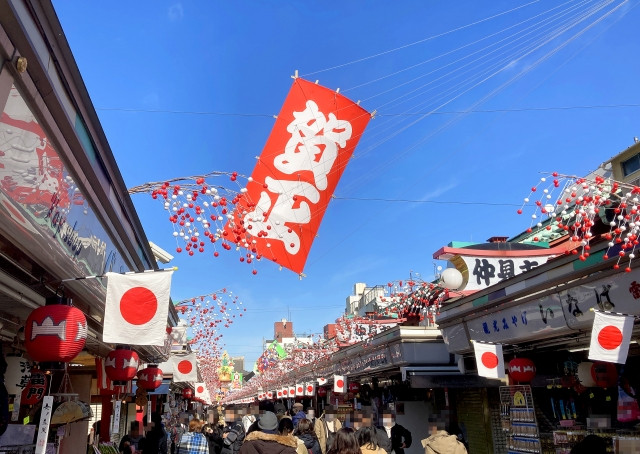Japan is nicknamed the land of the rising sun, but do you know why? The sun is an important symbol of the origin story of the nation. Its importance is reflected in its national flag - the Hinomaru - which has a red “sun” on a white background.
Table of Contents
- Introduction to the Hinomaru
- History of the Japanese Flag
- Current Uses of the National Flag of Japan
- A Few Fun Facts about the Japanese National Flag
- In Conclusion
Introduction to the Hinomaru
A national flag is typically designed taking into account how it will represent a nation for years to come, down to its colors and symbolism. Of course, Japan is no different.
The national flag of Japan is a rectangular white base with a large red disc in the center. The name of it is Nisshoki but is more commonly referred to as Hinomaru which means "circle of the sun”. The color of the disc is not just red but deep red (or crimson) which is said to represent vitality and passion while white is said to represent purity and honesty.
This flag was adopted as the flag of Japan in the 1870s but became officially known as the national flag in 1999 which is quite surprising for how long it has been used.
Writer's Pick
History of the Japanese Flag

It is believed that the sun goddess Amaterasu was the founder of Japan back in the 7th century and was a direct ancestor of Kow-yamato-iware-hiko No Mikoto otherwise known as Jimmu, the first emperor of Japan. Still today the emperor is considered a “Son of the Sun” and many people know that Japan is referred to as “Land of the Rising Sun”.
The first use of the flag is not known for sure, but may be as early as the 600s although it may not be the exact same as how it looks today.
As we mentioned above, the flag was adopted as the flag of Japan in 1854, but it wasn’t until the flag law regulations that it was officially given the status of national flag in 1999.
※Britannica, “Flag of Japan”
Why does Japan have two flags?
So as we just explained, Japan's national flag is the one with a red disc on a white background, but there is another flag associated with Japan. “The rising sun” flag similarly has a red disc on a white background but with sixteen red rays, essentially forming a red sun.
It has been used as a symbol of celebration and good luck in the past in Japan, even currently. However, the controversy of the rising sun flag comes from the fact that it was used as a symbol of the Japanese military during World War II. Thus for all of the countries that Japan invaded and occupied during the war, it is a symbol of attack and a dark period of history, especially to Korea.
The “rising sun flag” continues to be used by the Japanese navy. People have asked for it not to be used at official events like the Olympics as to not bring up the images of the war. The flag continues to be controversial as not all of the younger generation know what it means. Recently, a Tiktoker had a tattoo of the rising sun flag without knowing its implications and ended up apologizing with a promise to have it removed or covered up after people angrily commented on the history of the flag.
Current Uses of the National Flag of Japan

The flag of Japan is mostly displayed in government buildings nowadays. Schools may have them, and they are often seen at large events like graduations.
As part of the celebration for the coronation of the new emperor, people waved the Hinomaru flag to greet him as his motorcade passed on the streets.
On a national level, when Japan is hosting another country as a guest, the flag of Japan flies at the left corner followed by guest countries' flags flying to its right and when there are many countries as guests then their flags are hoisted in alphabetical order as per United Nations protocol.
※Ministry of Foreign Affairs Japan, Diplomatic Procedures (Protocol)
A Few Fun Facts about the Japanese National Flag

-
Izumo Taisha Shrine in Shimane Prefecture houses the biggest Japanese national flag in the country. It is 9 metres by 13.6 metres and is flown 47 metres in the air, making an impressive display at an already historical shrine.
-
If you are interested in seeing the oldest flag in Japan, then it can be found at Unpoji Temple in Koshu, Yamanashi Prefecture. It is believed the flag dates back to the eleventh century and was offered to the temple by the emperor Go-Reizei. Other historical flags can be found here as well.
-
A common thing you will find in Japanese bento is a pickled plum called umeboshi in the middle of a rectangular block of white rice. This is said to represent the Hinomaru flag.
In Conclusion

Japan’s national flag is one that most people can recognize worldwide. The flag has its own history and tradition and now, Japan’s flag represents the Japanese people, celebration and peace.













.jpg)




 (2).png)
















